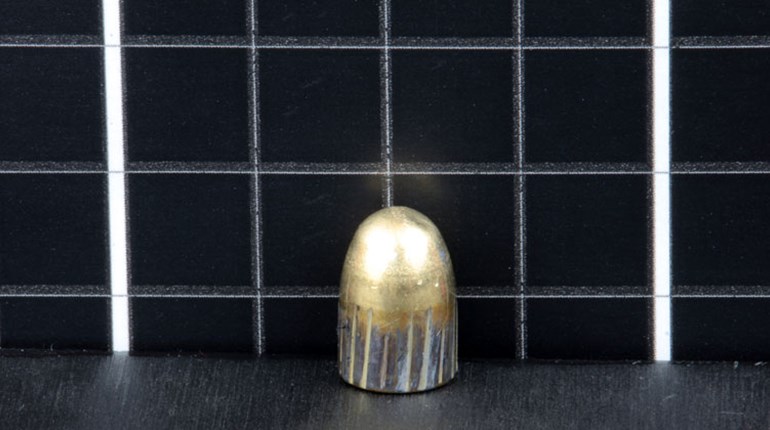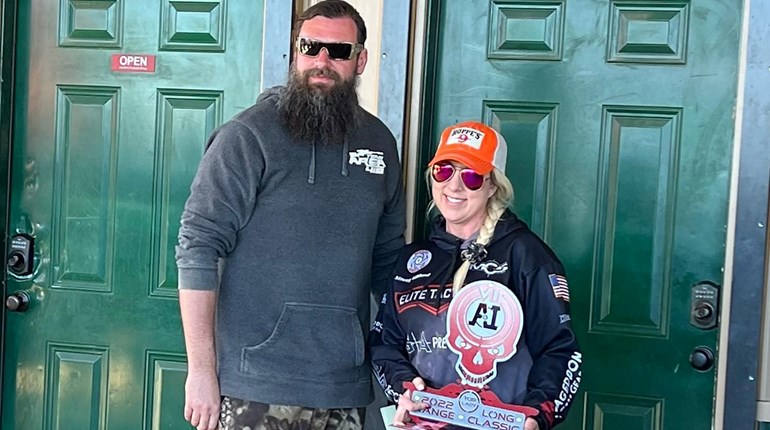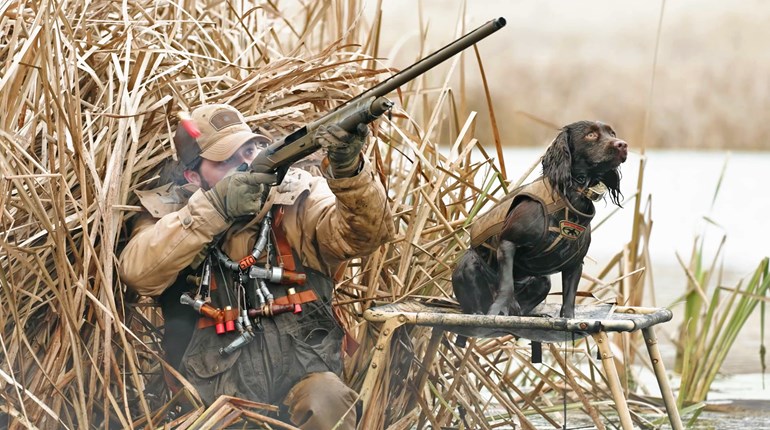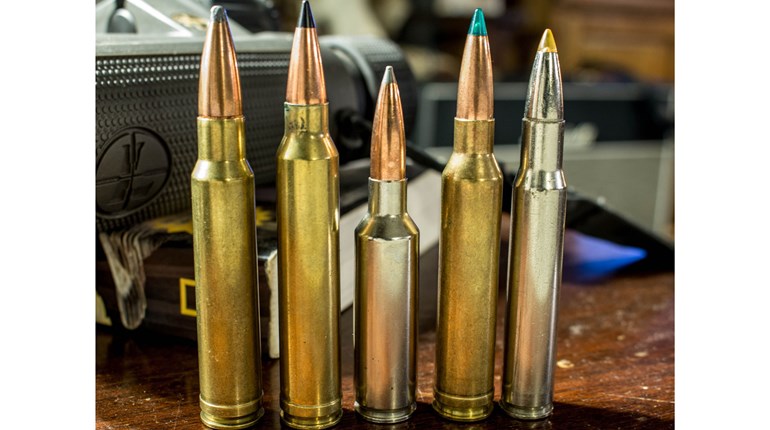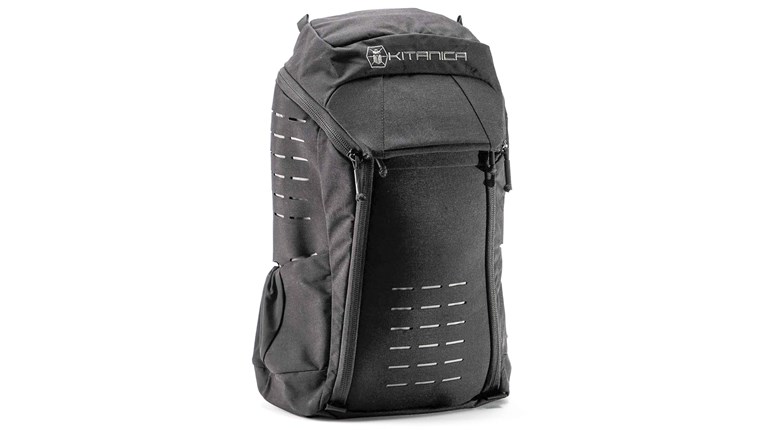
Rifles built for tactical precision shooting don't come cheap. Whether it's a bolt-action or semi-automatic platform, the quality materials, technology and expert craftsmanship that combine to form the basis for a superbly accurate long gun demand a sizeable investment. And while many reputable manufacturers market their precision masterpieces with accuracy guarantees, the level of performance ultimately rests on the end user, the shooter—you.
Throwing down $2,000 or more on a rifle with sub-MOA potential only makes sense if you can shoot it to that level or are willing to bring your skills up to par. Since most people don't enjoy wasting money—and the point is to develop a proficiency that will enable you to hold down the fort should things get bad—perfecting your technique is just as important as selecting your tool. That's where training and practice come in.
International Tactical Training Seminars (ITTS) in Southern California has built a business on teaching shooters not only the skills they need to extract the utmost potential from their chosen firearm, but also how to apply those skills when faced with a deadly threat. Co-founder and lead instructor Scott Reitz—or "Uncle Scotty" as he prefers to be called by his students—is a 30-year veteran of the Los Angeles Police Department. He spent 10 years with the LAPD Metropolitan Division's D Platoon (SWAT), as well as served as the primary firearms and tactics instructor for Metro and LAPD advanced in-service training. Reitz is also qualified as an expert witness by the Federal and Superior Courts in deadly force, training, safety and police tactics.

The three "Sniper Rifle" courses at ITTS focus on precision marksmanship out to 1,000 yards. The curricula of the level II and III courses include advanced topics such as moving targets, hostage scenarios, low-light techniques and unconventional shooting positions. Appropriately, the higher courses build on the skills learned in Sniper Rifle I—the ever-important fundamentals that are so vital to making a precise shot at any distance. Whether you are a new shooter or an experienced marksman, these basics form the key to accurate shooting. Mastering, and constantly reviewing, them will allow you to take full advantage of your rifle's performance.
Position Makes Perfect
Precision shooting starts with the prone position because it's the most stable. Part of that stability comes from a bipod attached to the rifle's fore-end, but the way in which your body interfaces with the gun also plays a role. "You want to be as straight as possible behind the rifle to maintain control and for follow-through," says Reitz.
Imagine a line extending rearward from your rifle's bore that runs through the receiver and buttstock. When you're firing from the prone position, that line should pass through your entire upper body, from your strong-side shoulder to your waist and upper thigh. If your body is angled to the side, the imaginary line will exit your torso near the middle of your back. Instead of having your entire body behind the rifle to deal with recoil, you're using only part of it. Even a light-recoiling rifle chambered in 5.56 NATO can jump around enough to cause poor follow-through—and a potential miss—if not properly controlled. A straight body position can also help you establish and maintain a natural point of aim.

With your shoulders square to the rifle, your legs should be spread widely to add more stability to your position. However, don't force them so far apart as to induce muscle strain. If your ankles are outside your shoulders when viewed from above, your position should be solid. Roll your toes outward so the ankle and instep of each foot is flat to the ground. The goal is to put as much of your body in contact with the surface under it as possible for support.
After you're prone behind the rifle, pay attention to how you grab the grip. Reitz stresses the importance of isolating your trigger finger from the rest of your hand to prevent torquing the rifle as you press the trigger. Use the other three fingers to firmly pull the buttstock into your shoulder, but make sure the pressure you apply to the grip is straight to the rear.
AR-style and other pistol grips that have a defined, vertical orientation work well with this technique, but you can achieve the same effect with just about any conventional buttstock design. The ticket is to apply pressure only to the front of the grip to keep from canting the rifle. Reitz prefers to position his hand high on the grip to lock it in place for follow-through, but regardless of where you place your hand, maintain constant rearward pressure on the grip throughout the trigger press and recoil.
Correct body position also includes the way you view the target through the scope. A full field of view is critical; you do not want to see a shadowed area along the edges of the scope. If "scope shadow" is present, adjust eye relief by remounting the scope, reposition your head on the buttstock or refine your cheek weld to eliminate it.
Fire and Follow Through
When it comes time to take the shot, trigger press should be smooth, controlled and straight to the rear. Just as with the way you grip the rifle, exerting pressure on one side of the trigger or the other during its rearward movement can be enough to cant the rifle, disturb your sight picture and make you miss. Most shooters place their finger on the trigger with the area forward of the first joint making contact.

The portion of the finger applying pressure should be as perpendicular to the trigger as possible, and it should move to the rear just far enough to break the shot.
Controlling your breathing goes along with trigger press. The breathing cycle includes inhaling and exhaling, with a natural pause after the lungs are emptied. Break the shot during that pause, when your body is still. The amount of time you have to accomplish this task depends on your level of physical fitness and can range anywhere from a couple of seconds to as many as 8 or 10. If you try to hold your breath for too long, your body will start to become starved for oxygen, your vision will deteriorate and your stability will wane. The pause in breathing should be natural, not forced.
"Trigger press is not the final step of the shot sequence," stresses Reitz. "Follow-through comes next, and it's just as important."
Follow-through is simple, but it's often overlooked and can lead to sloppy shooting. Proper follow-through means maintaining a solid position behind the rifle after you press the trigger, Reitz explains. Your finger stays on the trigger, and you continue to exert rearward pressure on the pistol grip. Keep your head on the buttstock and maintain sight alignment until you spot impact. Your upper body should become dead weight, absorbing recoil but remaining straight behind the rifle.
Pressing the trigger does not result in an instantaneous release of the bullet. The firing pin must first strike the primer, and the bullet has to travel down the bore. Granted, this takes a miniscule amount of time, but it's enough to allow you to induce errors. Changing the relationship of your body to the rifle during this period, however fleeting, will ruin an otherwise perfect shot. It's the last time you have any control of the bullet, so make it count. Release the trigger only after the rifle is done recoiling (and the cycle of operation is complete if you're shooting a semi-auto), and reposition your body if needed for the next shot.
Get Some Support
Although prone is the preferred position for precision shooting, it doesn't always work. Terrain features and the angle of the target can make it necessary to fire from other positions. But no matter what position you decide to use, supporting the rifle is key. The seated position serves nicely in many cases where prone will not. To get the most out of it, use your body to build a stable platform from which to fire.
"Cross your legs, sit down and raise your knees," instructs Reitz. "Push your elbows against the inside of your knees while trying to draw your knees together. It's uncomfortable, but it works."

Again, how long you can remain relatively stable depends on your level of fitness. Don't feel bad if you're shaking after only a few seconds. It's what you do in those few seconds of stability that count. The basics of marksmanship still apply, so take each one into account when making the shot.
Don't neglect your pack if you are looking for support, either. You can use it to raise the rifle beyond the limits of your bipod and lean on it when sitting for more stability. The more gear you have in your pack, the heavier and more stable it will be. Using other means of support is limited only by your ability to adapt to field conditions. Reitz even carries a set of climbing chocks and some rope to hang his rifle from walls and other vertical structures and gain support when standing.
Once you've learned the basics of marksmanship at ITTS, Reitz stresses the need to practice them. "My job is not to make you proficient," he states unapologetically. "This is up to you. My job is to introduce you to a skill set."
Marksmanship mechanics form a skill set that goes a long way in helping you shoot with precision. It may not be glamorous or "high speed," but it's worth your time if you want to get the most out of an accurate rifle.














